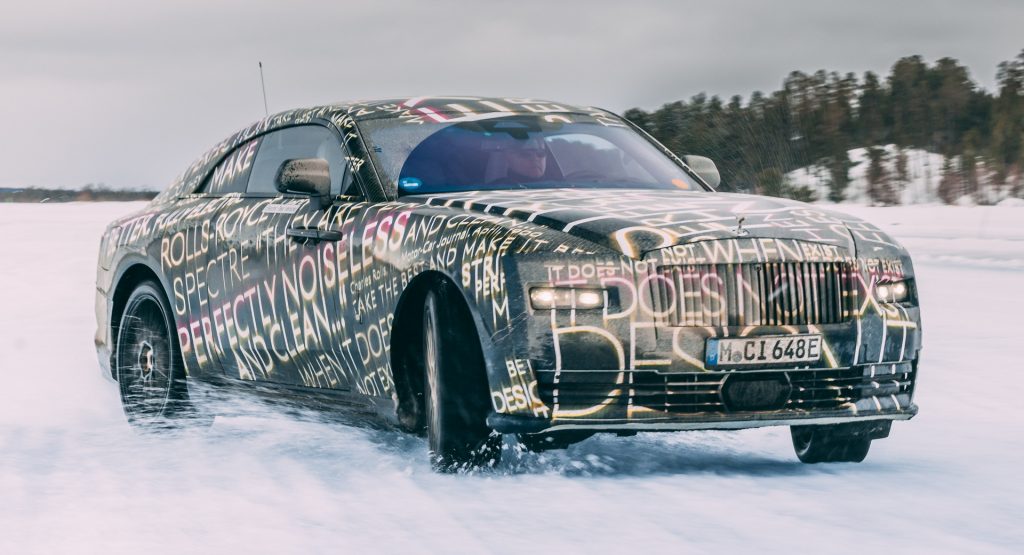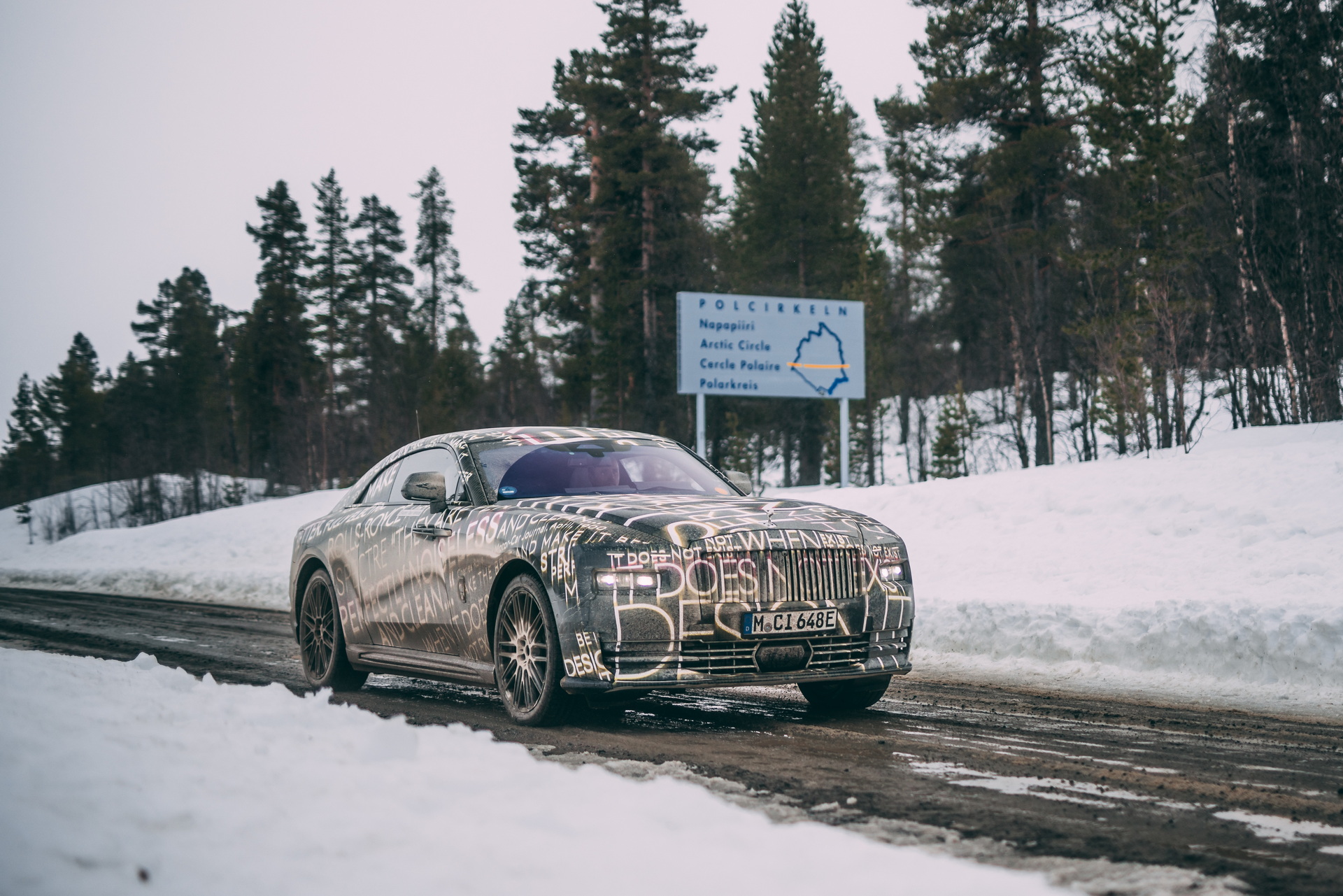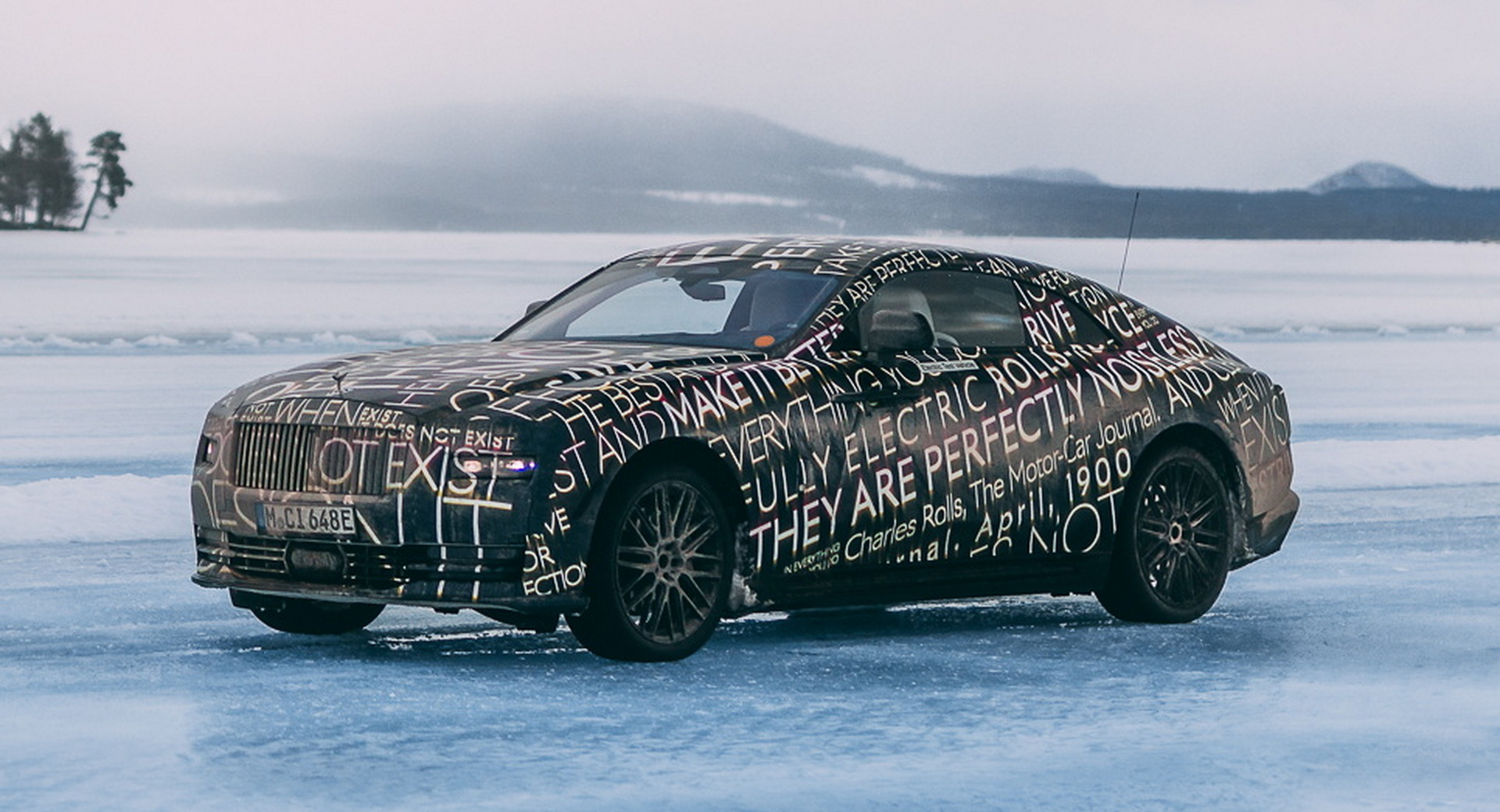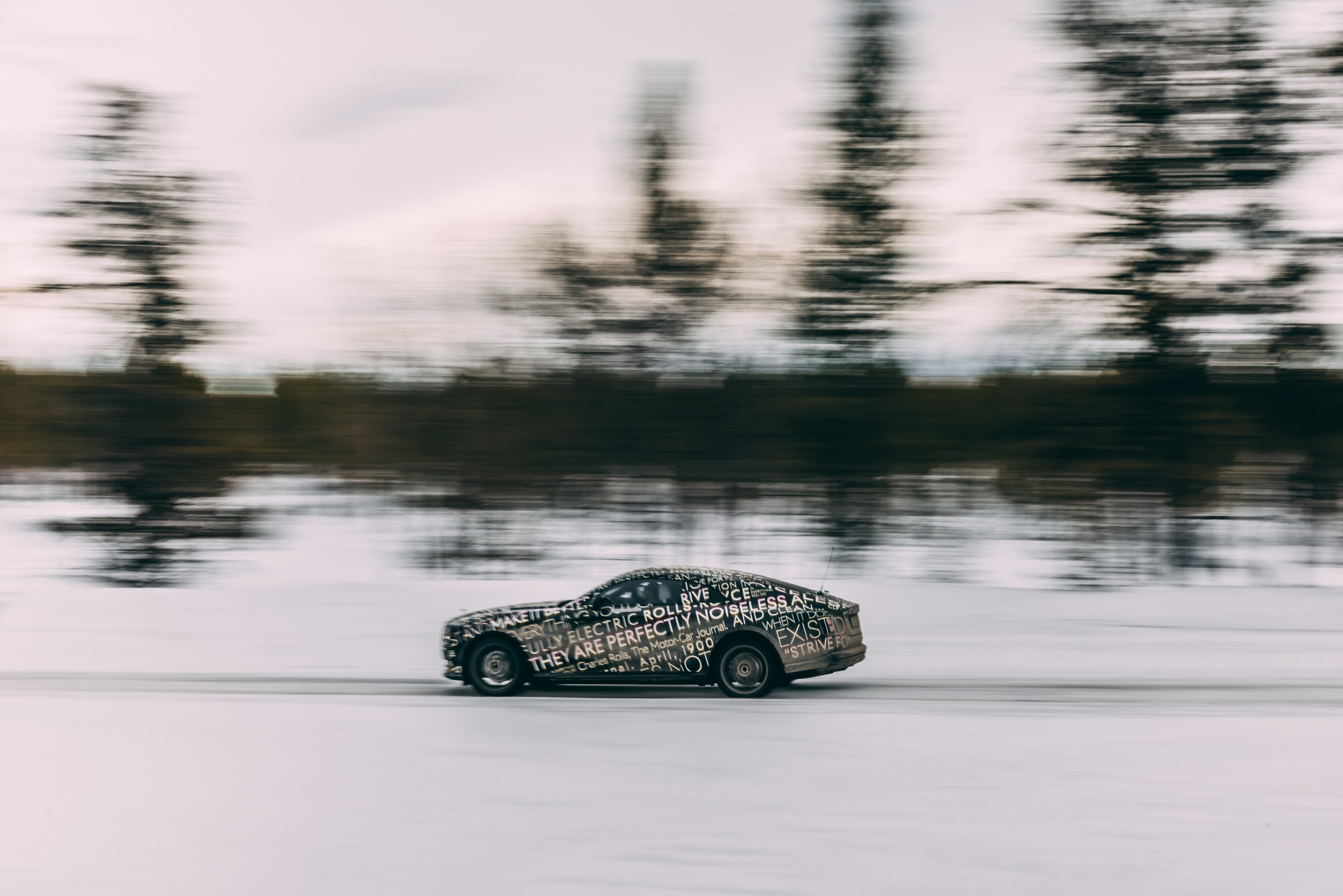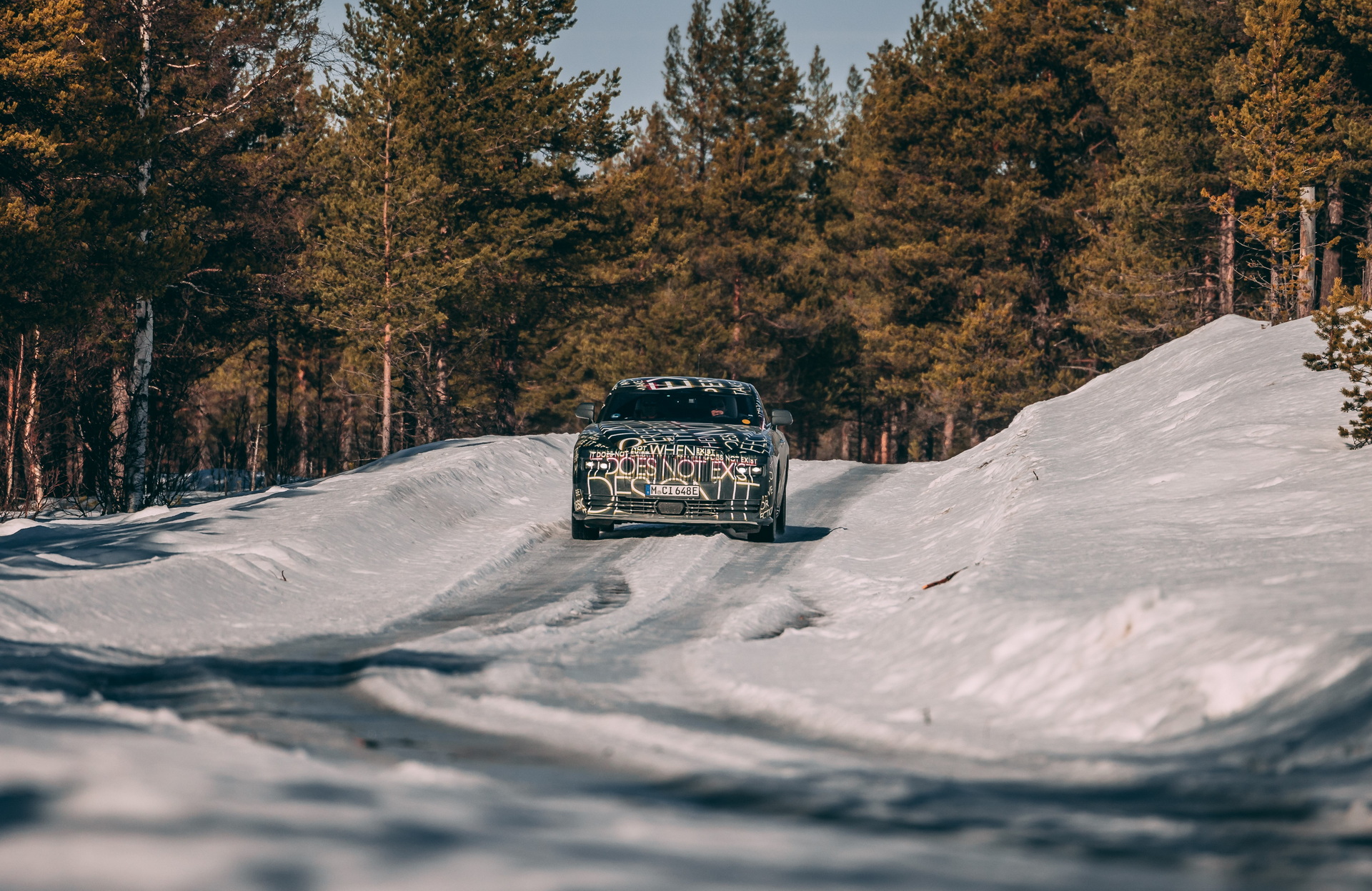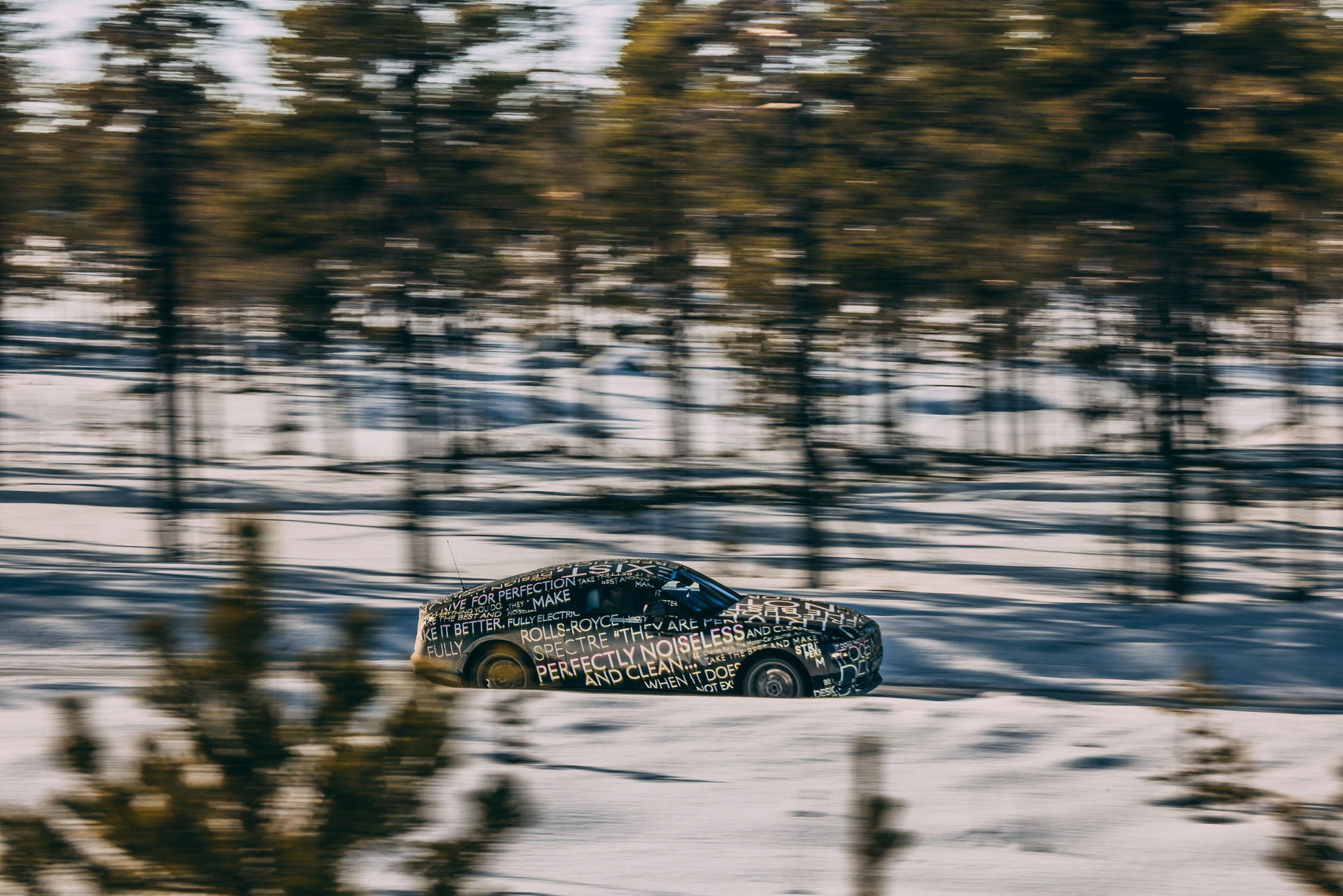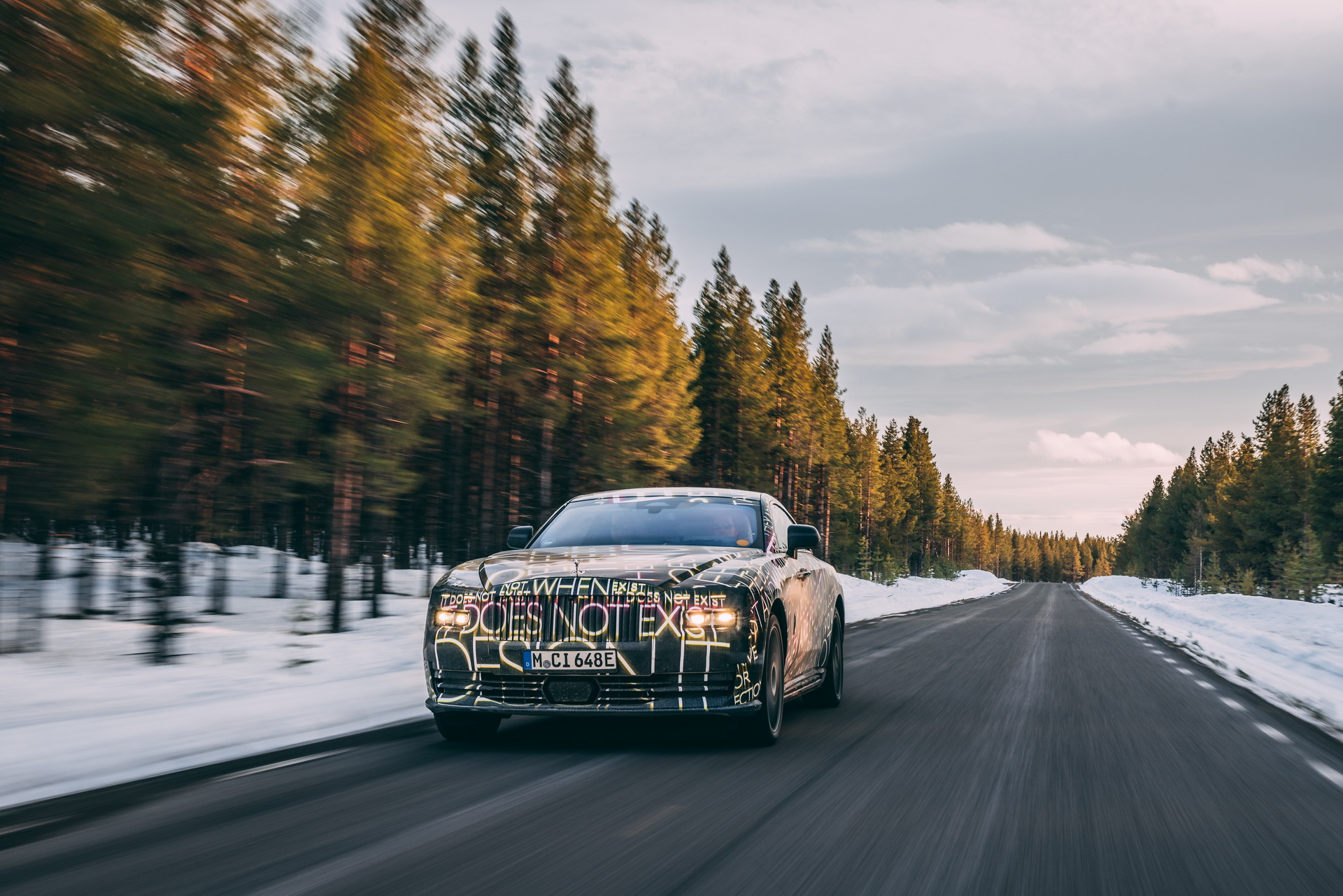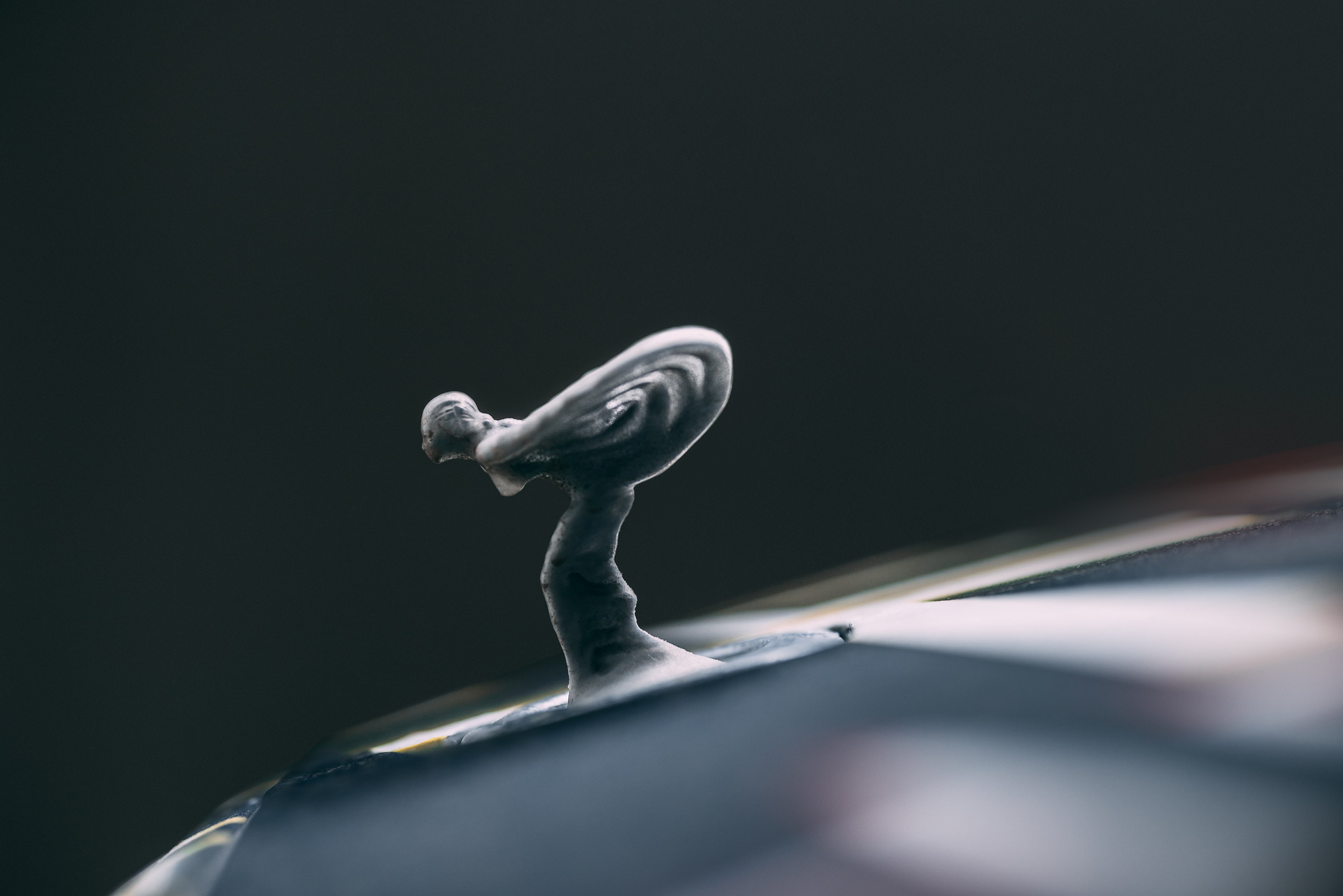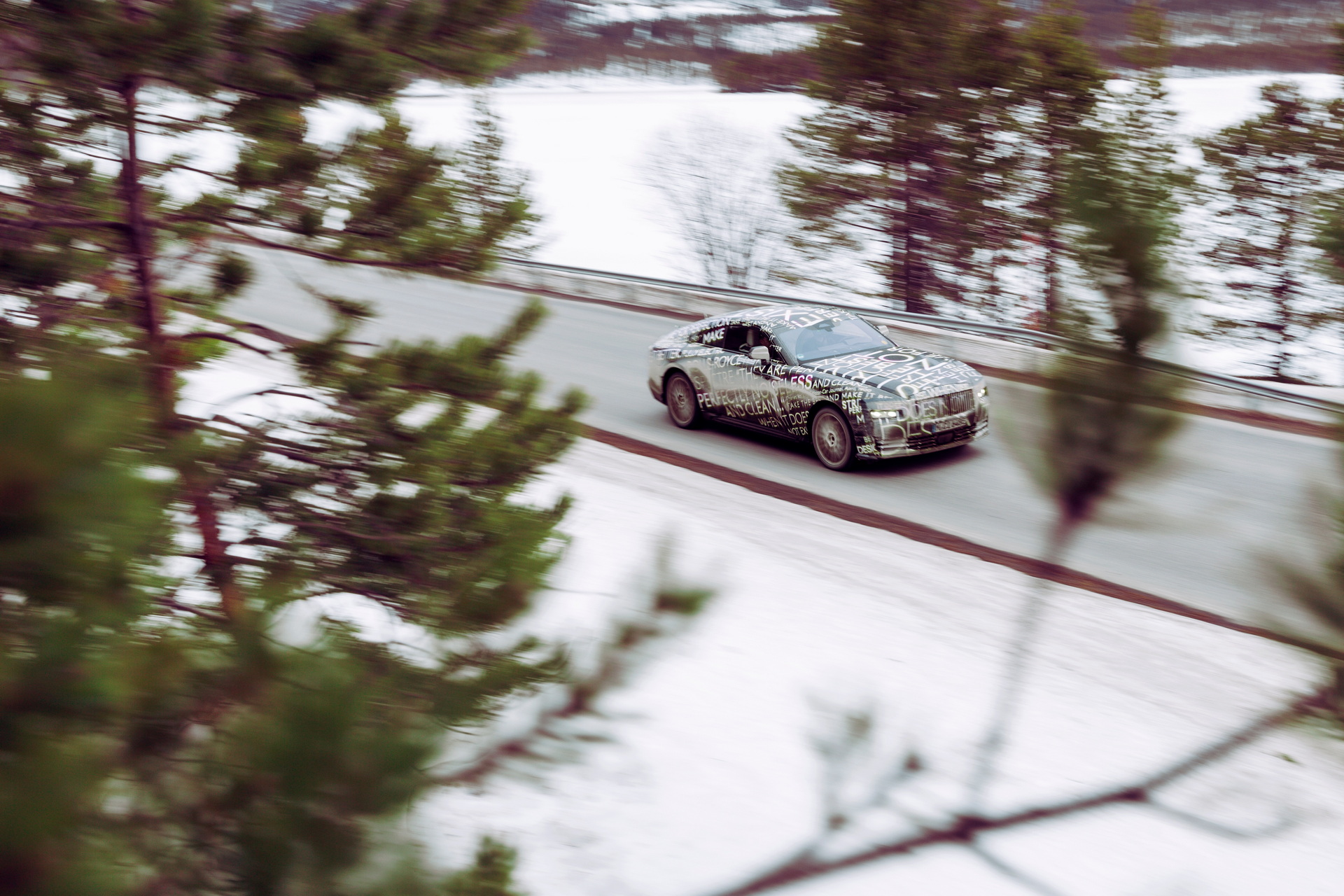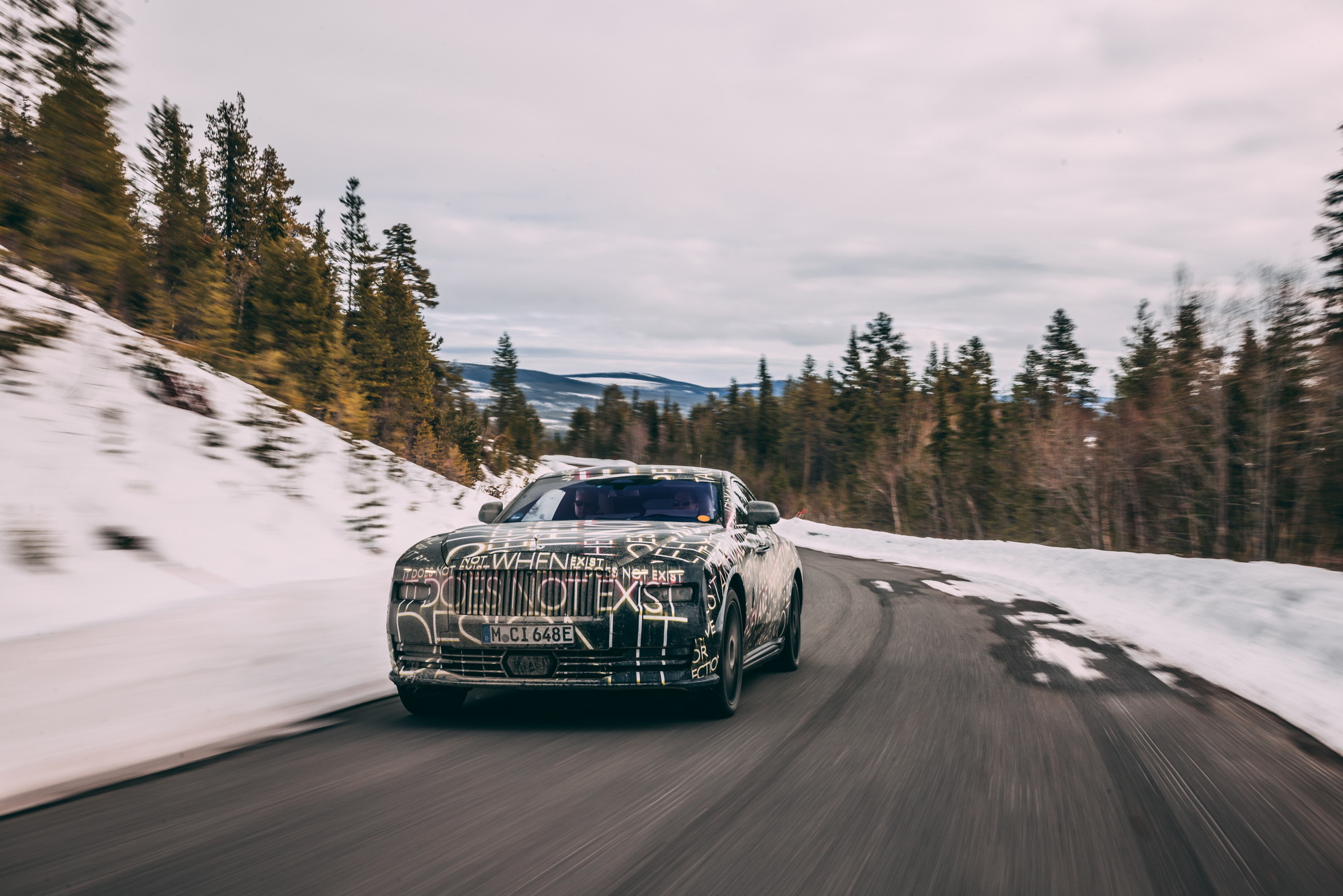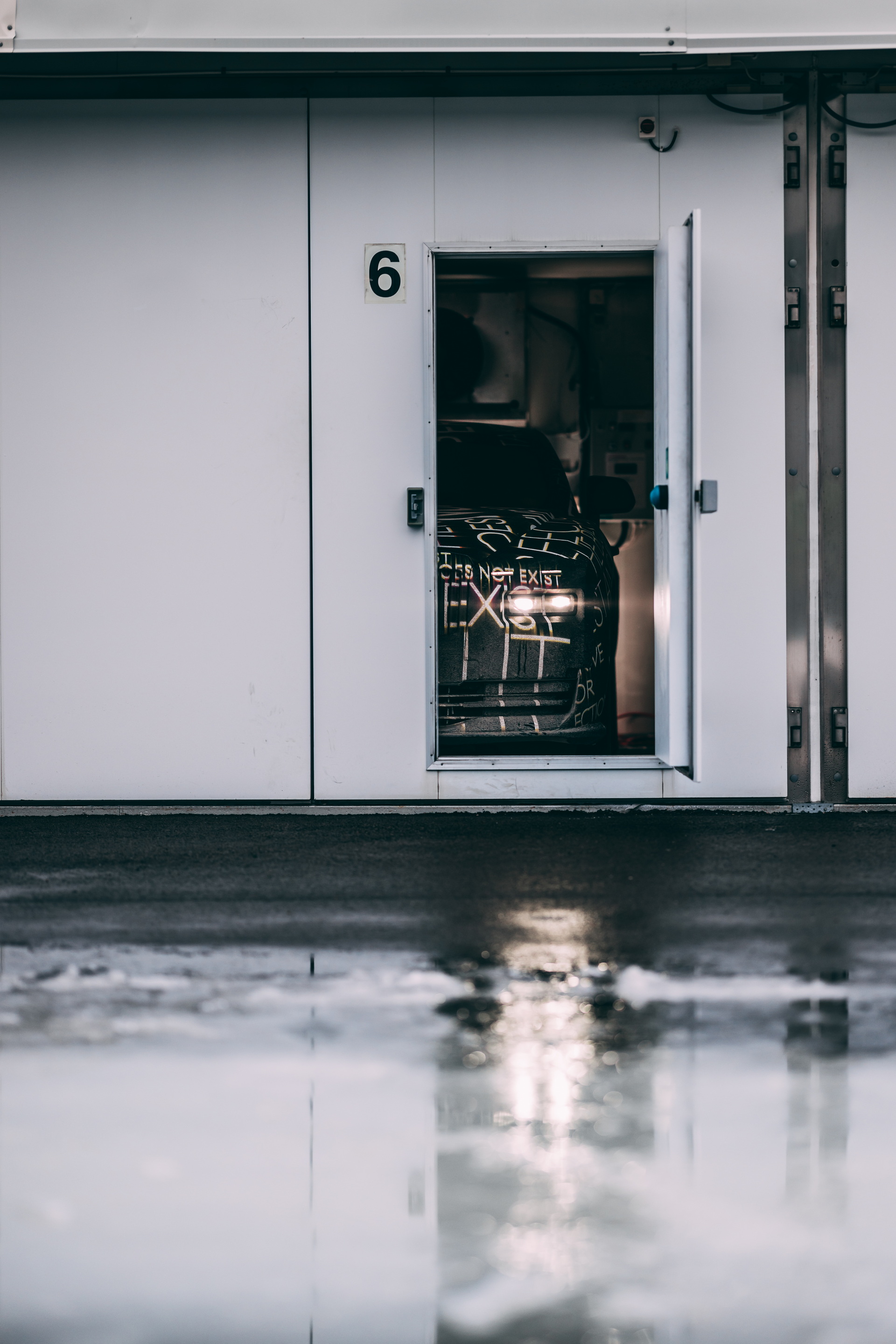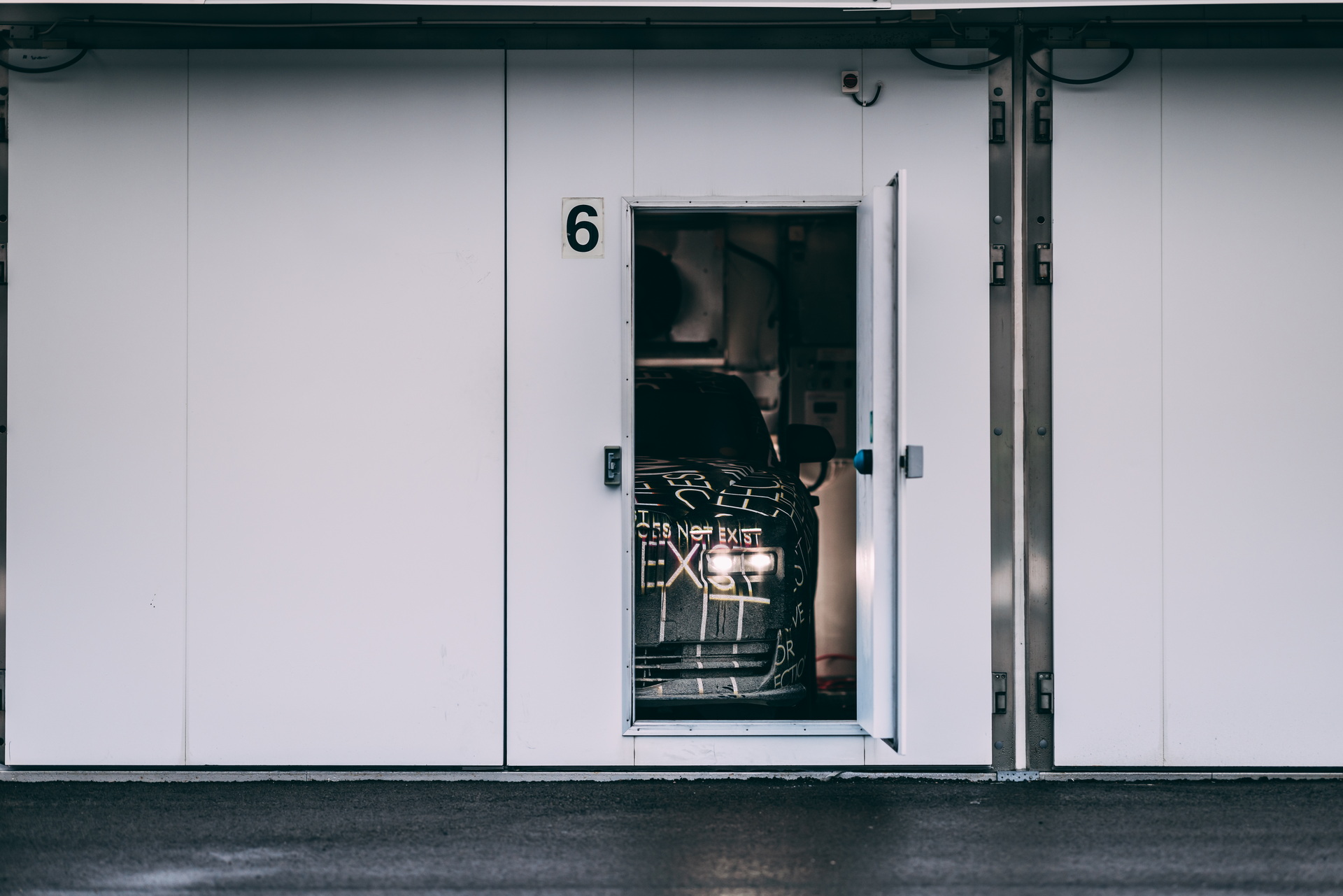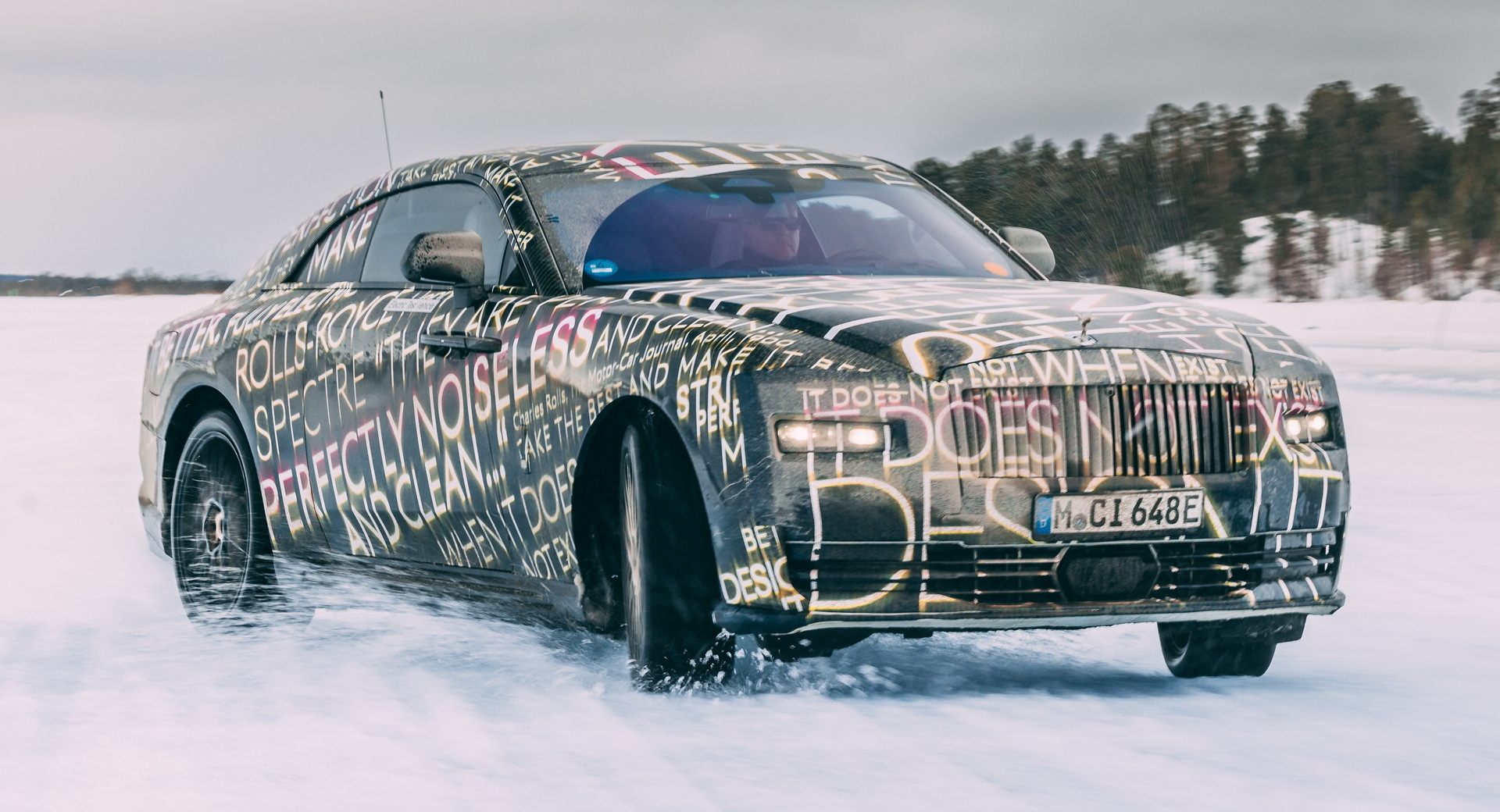Rolls-Royce has officially begun testing the all-electric Spectre in wintry Sweden, using the cold climate as part of its testing program that seeks to both slow time down and speed it up.
The company, which is always happy to wax lyrical in its press releases, says that before even putting the car into production, it will cover 2.5 million km (1.5 million miles) of driving, simulating more than 400 years of use for the average Rolls-Royce—which suggests that Rollers go just 6,250 km (3,883 miles) per year.
Now, make what you will from RR boss Torsten Müller-Ötvös’s statement: “The extraordinary undertaking of educating Spectre to think and behave like a Rolls-Royce will cover 2.5 million kilometers. Today, I can confirm that 25% of this journey is now complete, and the results have met our most ambitious expectations.”
Read Also: CEO Of Rolls-Royce Explains Why Their First EV Is A Two-Door Coupe
The winter testing is just a part of that but it helps engineers slow time down, a bit, as the low-grip surfaces cause the car’s high-speed handling characteristics to occur at much lower speeds. The luxury automaker calls this “de-escalated time” and it says that it allows its engineers to perfect the Spectre’s chassis control systems, powertrain management, and electronics control.
The cold weather, which ranges from -26C to -40C (-14F to -40F), is also very important for the people who pick Rolls-Royce‘s materials. Although all of the individual components are crudely tested in the cold before going on the vehicle to ensure that they can handle whatever the planet has to throw at them, this test ensures that all of the individual parts fit together at low temperatures as well as they do at high temperatures.
That means testing standard stuff, like NVH, and extends to testing the density of door rubbers, bushing compounds, fastening materials, and even the properties of the glues used in the vehicle. Taking the Spectre to Arjeplog, Sweden, has also allowed the automaker to test the efficiency of the heating, ventilation, air conditioning, and cooling systems, which are crucial for the EV.
“Refining the all-electric drivetrain that underpins Spectre challenges the very definition of engineering,” said Mihiar Ayoubi, director of engineering at Rolls-Royce. “The departure from internal combustion engines allows us to significantly increase the processing power of our individual components and create a Decentralised Intelligence.”
It has all led to a vehicle with more than 700 kg (1,543 lbs) of sound deadening material to make it perfectly quiet, no matter the conditions. Every detail has been considered, down to the Spirit of Ecstacy hood ornament, which was aerodynamically tuned to help contribute to its 0.26 drag coefficient in early prototypes.
“Here in Arjeplog we have built a significant foundation on which we will create a true Rolls-Royce,” said Ayoubi. “This is a big step forward for our brand, but also for electrification – even though Spectre is in its infancy, I can confirm that the technology is able to contain the Rolls-Royce experience.”
There’s still some time to go before customers can experience that sumptuous electric luxury since Rolls-Royce expects to start making customer deliveries in the fourth quarter of 2023.




